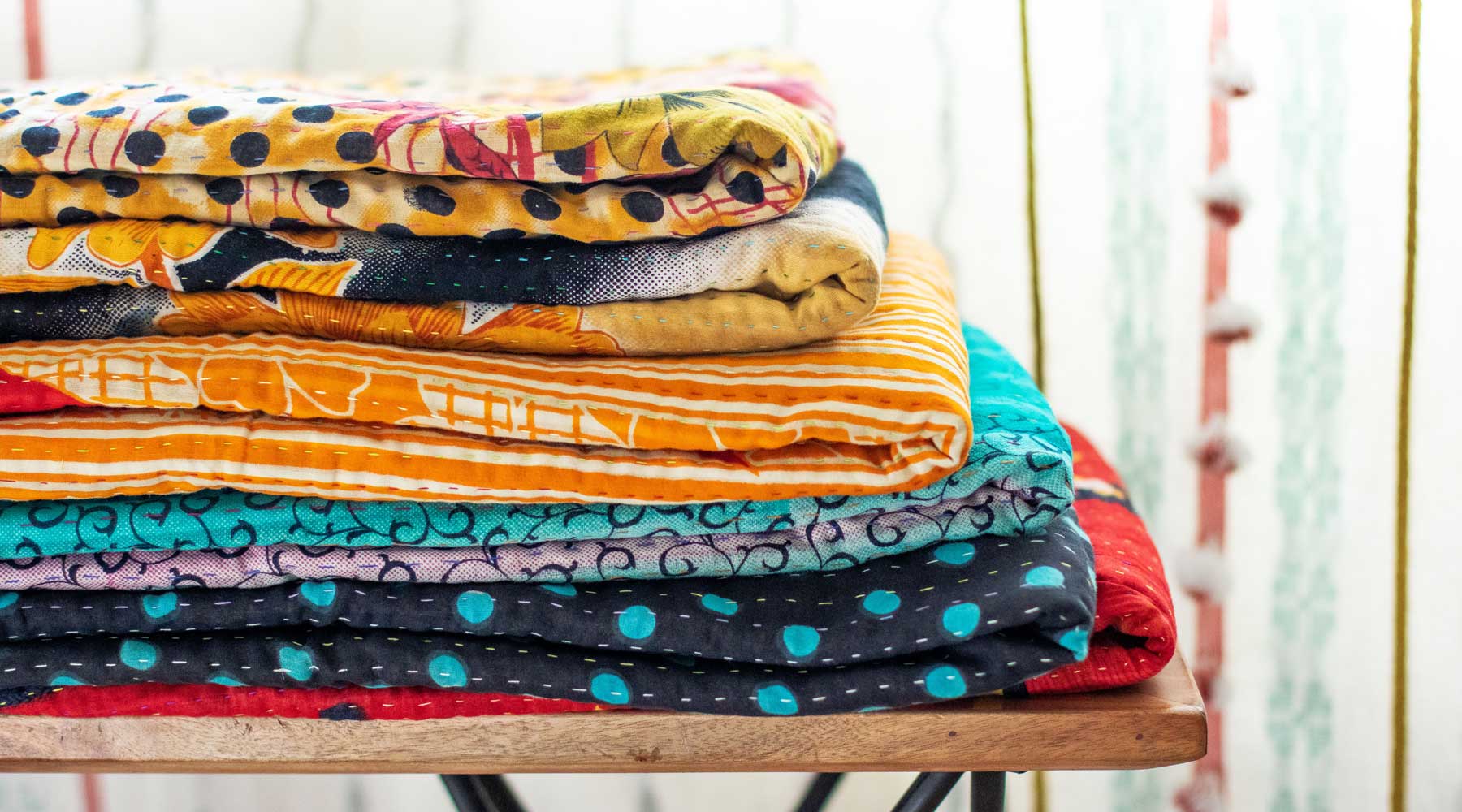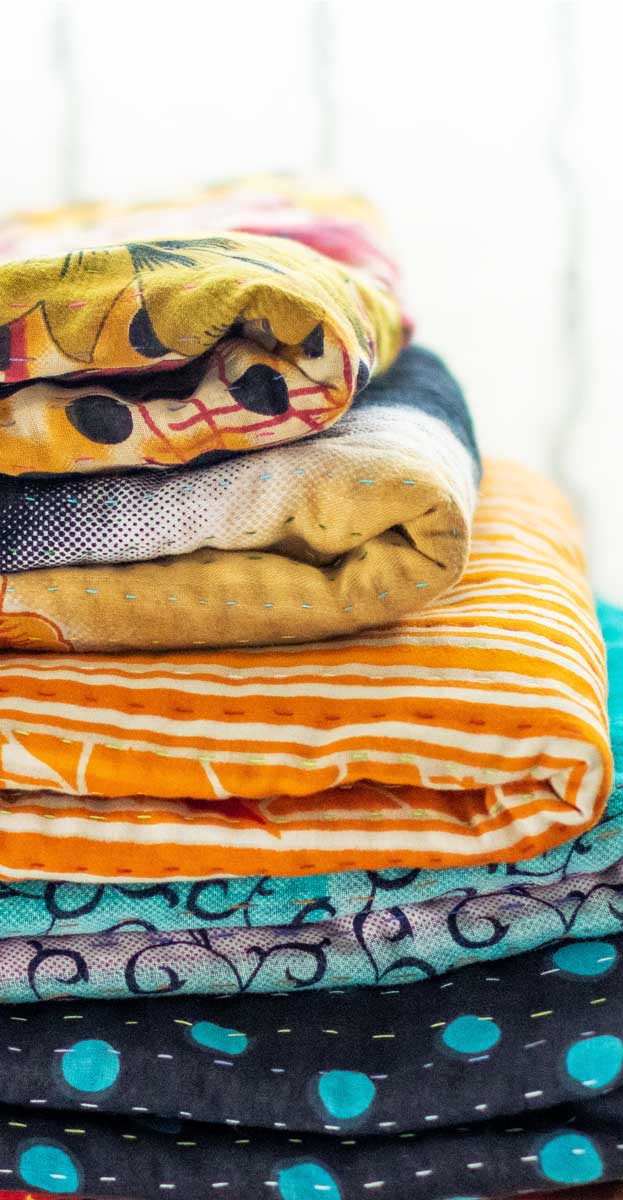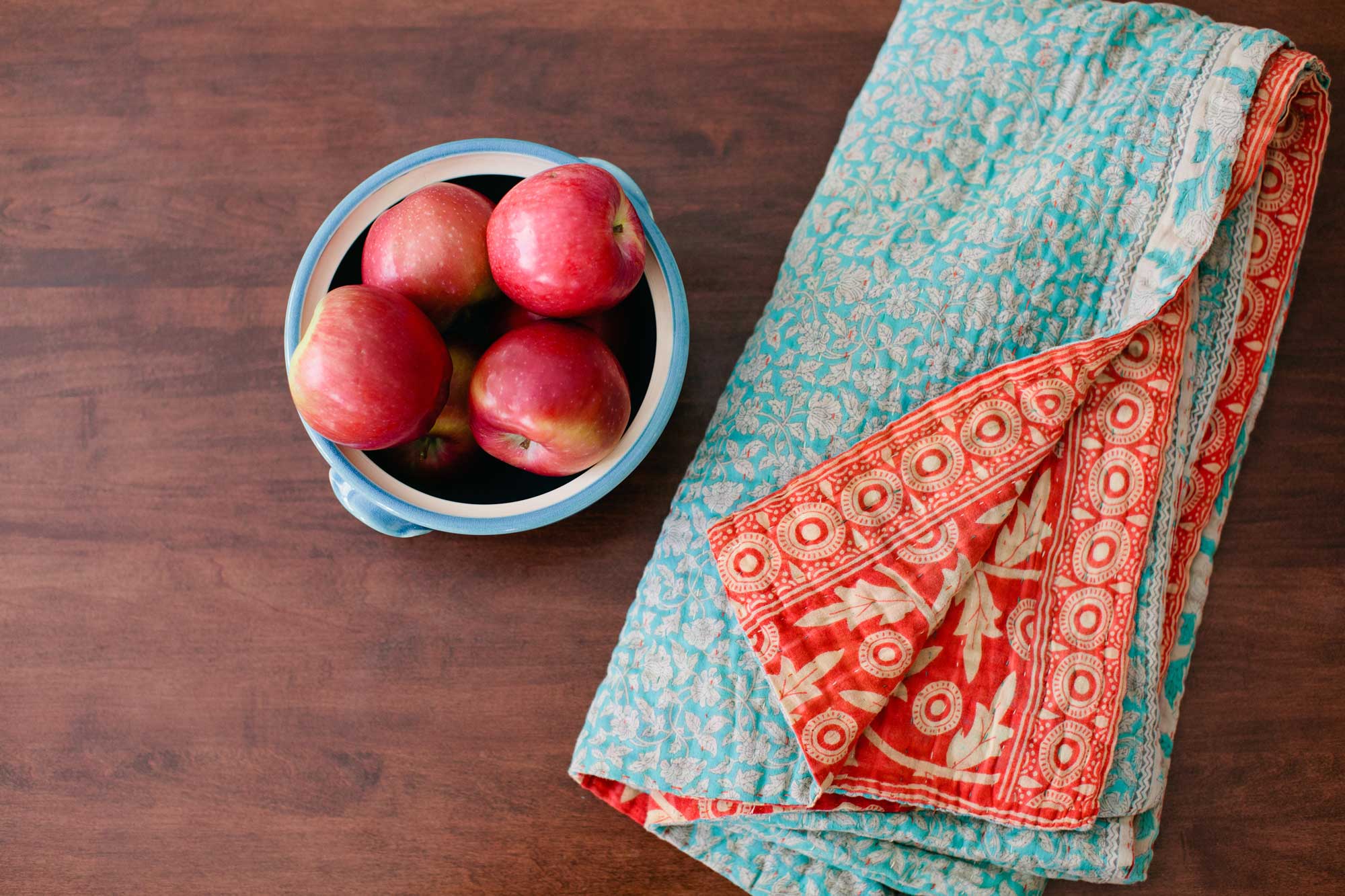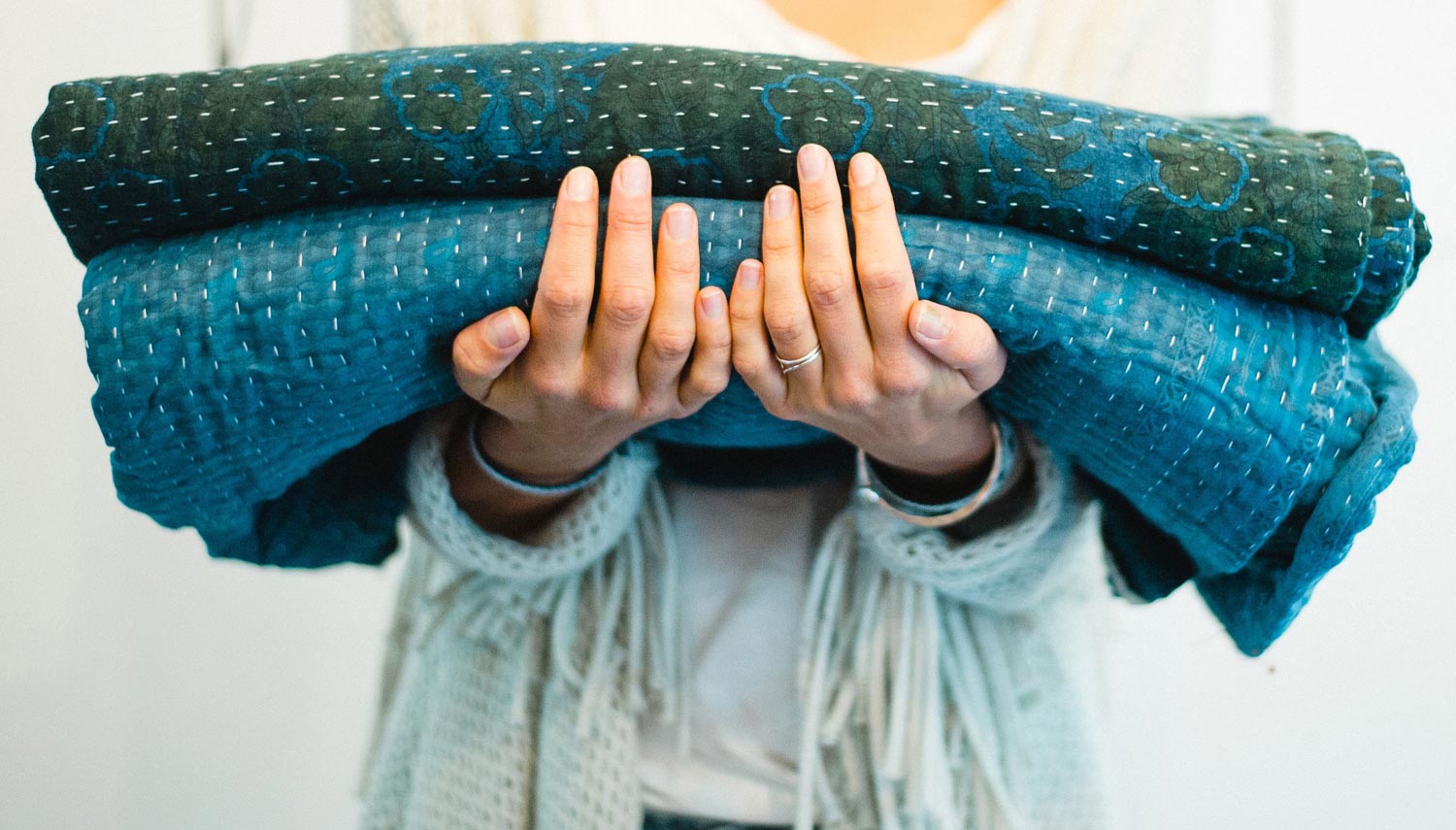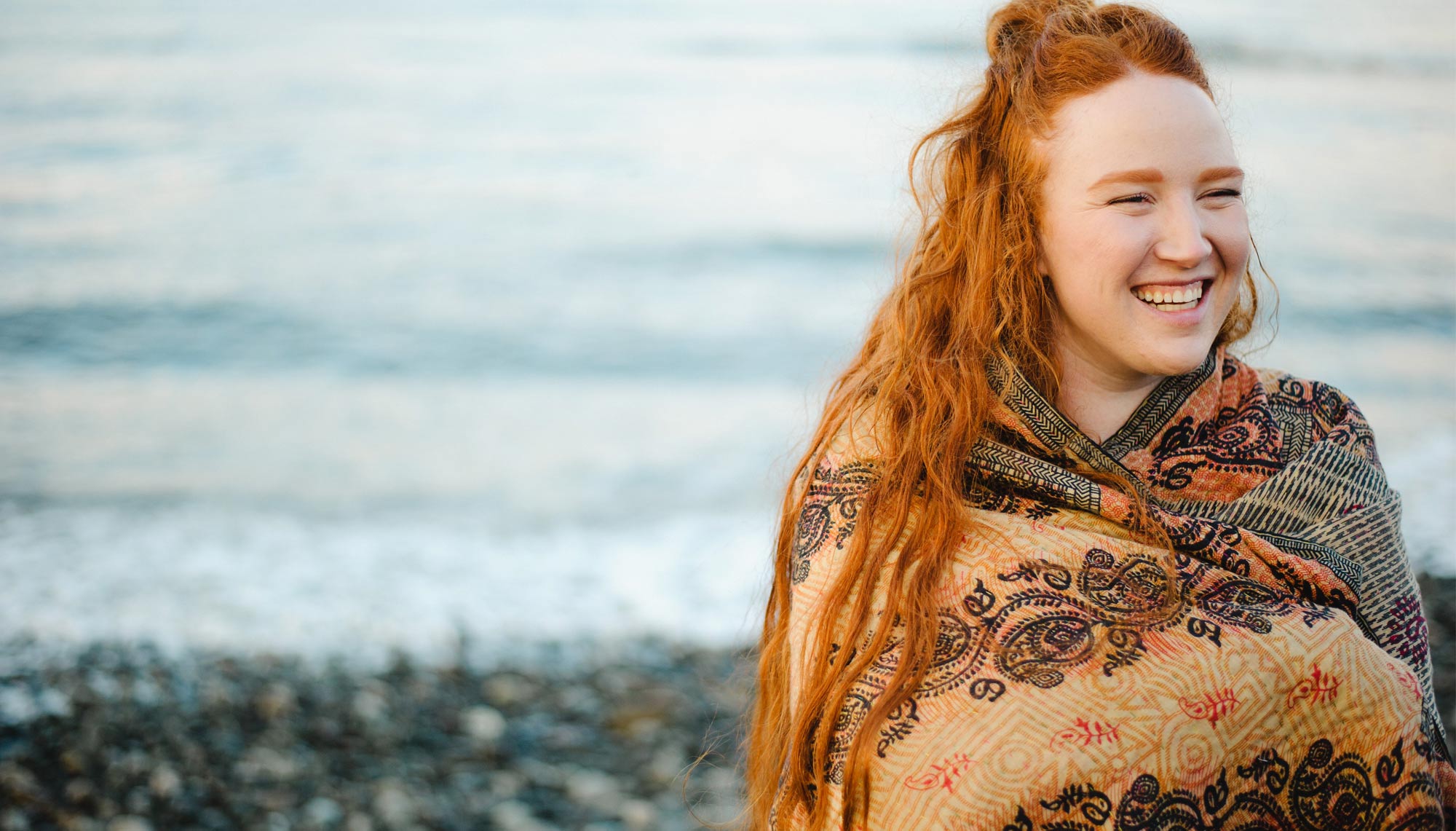What is Kantha?
What does the term “kantha” mean? What are kantha quilts?
Kantha (meaning: “patched cloth”) refers to both the tradition and craft of producing these unique, quilted blankets (making something useful and beautiful out of discarded items), as well as the stitch itself (a small, straight running stitch in Bengali embroidery). Kantha quilts are layers of cloth stitched together using this regional technique.
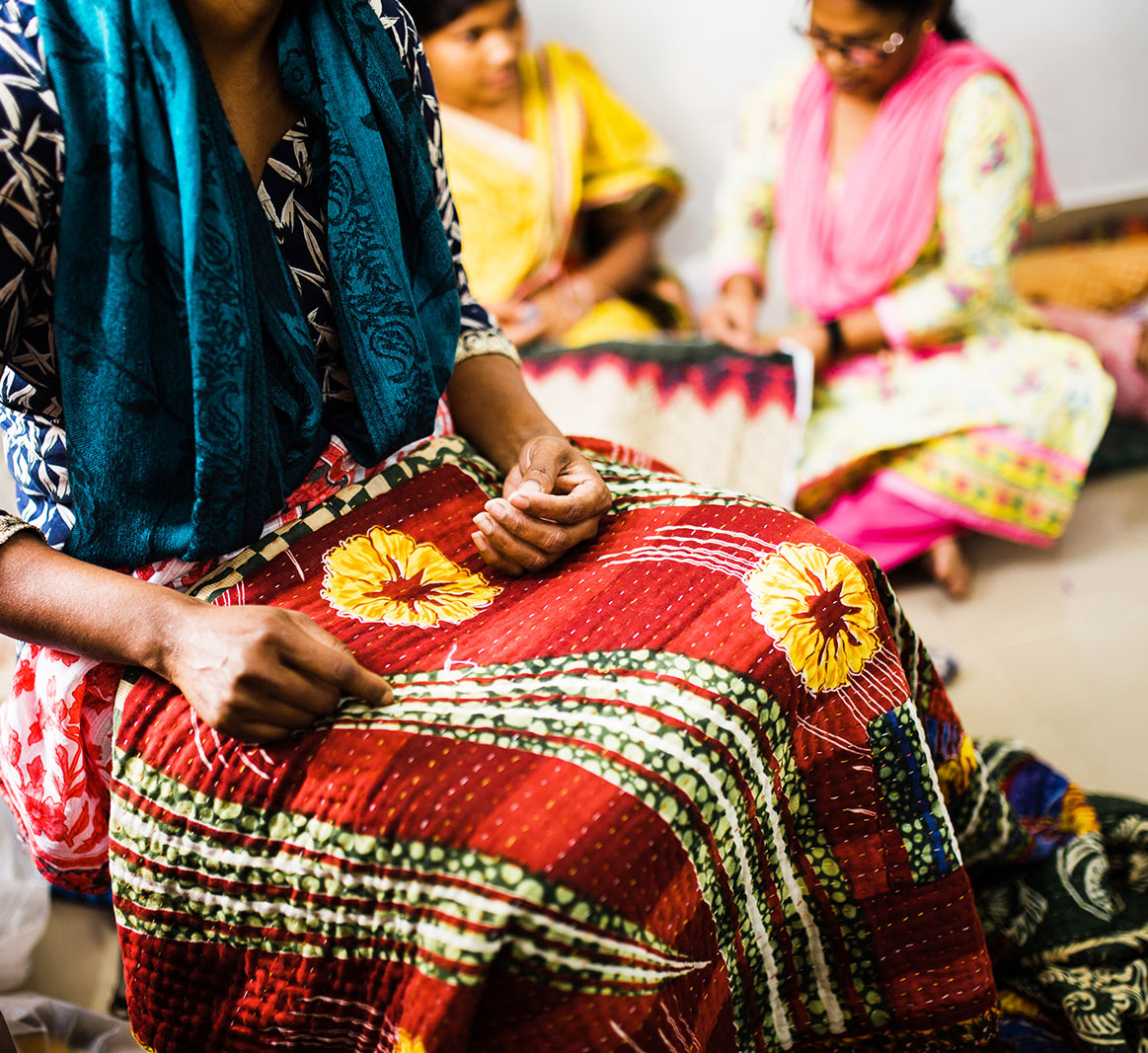
Let’s deep dive into everything there is to know about kantha!
・Where is Kantha From/Origins?
・What are Kantha Quilts Made of?
・How are Kantha Blankets Made?
・What are Kantha Used For?
・Are Kantha Quilts Soft? Warm? Thick? Ethical?
・Can You Wash a Kantha Quilt?
・How to Choose a Good Quality Kantha Quilt
Where is Kantha From?
Kantha is a traditional type of stitch & embroidered quilt native to rural, eastern South Asia — in particular Bangladesh and the neighboring Indian states of West Bengal and Odisha, along the Bay of Bengal. It is a craft of the Bengal region ("Bengali"), which is not the same as Bangladeshi (meaning: of the country of Bangladesh).
Most known embroidery stitches have been incorporated into the art of kantha, though at its essence, the kantha phor (stitch) is the simple running stitch.
At the most basic, kantha has always been a craft of repurposing the old (scraps & rags) into new — functional blankets to keep warm during colder months.
But, artistry has also been central to the craft. “Special kantha” went beyond practicality to mean much more to the makers & their descendents (or gift recipients). Styles of special embroidery & the techniques stitched into the cloth were immersed in folk beliefs, as well as in shared rituals and common cultural practices.
Different designs & embellishments may reflect prayers and vows of women, or storytelling of a woman’s family history. Blankets were often stitched as gifts for special occasions and personified the love & devotion of a mother, wife, or daughter for the family (or blanket recipient). Taught as a generational skill, elaborate kantha were a way for illiterate women to leave a lasting mark with symbolic well-wishing, desires, & storytelling.
What are Kantha Quilts Made of?
Traditionally, kantha quilts were made with cloth from old saris (women’s garments) and dhotis (men’s garments) and embroidered with thread pulled from the sari’s borders. Desired thickness determined the number of layers, and the materials were any scraps & rags available.
Today, these works of art are made using new thread, but still with discarded or repurposed cloth. Our kantha use 6 layers of saris that have been purchased in bulk, washed, matched, stitched, patched, and washed again. Many modern kanthas use 2 layers of cloth.
Of course, the kantha blankets you see for sale today are not made of old rags! Lightly used Saris may be sold or discarded by wealthier women because of changing styles or interests. Or, cloth may be acquired from factory overruns, misprints, remnants, color variations, or printing flaws.
How Are Kantha Blankets Made?
First, cloth is selected for the outer layers of the blanket. Then, all the layers are stacked, and bricks are placed on the edges to pull the blanket taut. Some lines of kantha are stitched at bigger intervals; this works like a basting stitch to hold the structure together. Once these lines have been sewn, women can sit more comfortably to stitch the remainder of the blanket.
Finally, the edges are stitched to close up the raw edges, and a name label is hand-stitched to the corner.
Get a real-life glimpse of our kantha blankets being made by Basha Boutique in this 2 min. video.
What Are Kantha Blankets Used For?
In your home, a kantha blanket can be used as a one-of-a-kind accessory for a pop of color or rich texture to add to your design. There are bigger investment anchors in a room that you want to choose conservatively for versatility & to last in style (furniture, rugs). But, a smaller, accent piece like a kantha throw can be more bold & risky — it can really add the wow to your space! (Learn more about choosing & styling a throw for your home here >)
Beyond styling an interior, kantha throws are practically used in a number of ways. Here are some common uses that we have seen or heard from dignify customers:
- Picnic or beach blanket (especially large throws; — classic throws also sub as an absorbent beach towel if you’re packing light)
- Lap blanket in a cold office or in a wheelchair (a mini kantha is the perfect size for this, or a classic throw folded in half)
- Patio blankets — on a back deck or restaurant patio
- TV blankets — our kanthas are long enough to cover both shoulders and toes
- Yoga blanket — Yoga practitioners may fold a throw to use as a gentle prop/block, or lay it out over the mat during cooldown
Consistent with traditional kantha, many kantha blankets are given as gifts for special occasions. The meaningful, redemptive story of our kantha blankets has resounded with customers for so many occasions:
- Sympathy gifts:
- Grief & loss
- Cancer
- Infertility
- Celebratory gifts:
- Graduation
- Retirement
- Milestone birthday
- Sobriety
- Wedding
- Baby arrivals
- Housewarming
- Thank you or host gift
Family members & close friends who are separated by distance have sent a blanket as a way to say,
“I can’t be with you in person, but ”wrap yourself in love” with this blanket, and know that I am there in spirit.”
Of course, at the most basic, kantha are used for what they've always been made for: keeping warm!
Are Kantha Quilts Soft?
Yes, kantha blankets are, for the most part, very soft & supple.
The fabric choice & density of stitching are the biggest factors of softness in a kantha quilt.
“Silk” kantha are made from saris that are sold, most often, by sellers who tout the fabric as 100% silk — but, the exact fibre makeup is unconfirmed. The softness of these blankets would vary based on precisely what the cloth is made of.
Cotton kantha are made of muslin cotton and tend to be smooth & soft to the touch. The softest cotton kantha blankets are made with the most worn-in cloth; it makes for a trade-off, as the fabric is also the most worn and may not last as long.
Kantha made from new cloth (like our Simplicity Kantha Throws) start out a bit more stiff, but get softer & suppler with time & use. Northern-style kantha with dense stitching is less supple, because the density creates more structure & stiffness to the finished blanket. But, these too will soften over time with use & enjoyment.
Are Kantha Quilts Thick?
The thickness of a kantha quilt or blanket will depend entirely on the maker. Many modern kantha are 2 layers thick, which would be similar to a baby swaddle or two bedsheets stitched together. Thicker kantha will be more substantial and warmer. If you are shopping for a kantha blanket, look in the description for how it is made.
Our colorful kantha blankets are made from 6 layers of cloth quilted together. Six layers of cloth sounds thick, but remember that each layer is a very thin muslin. The final product is a mid-weight, multipurpose blanket that is easy to tote around, or to fold for styling.
Are Kantha Quilts Warm?
The warmth of a kantha quilt will depend on the thickness (see above). Heavier-weight fabric (like the new cloth of our simplicity white throws) or dense stitching (like our Northern-style kantha) will add to the warmth.
Our classic style of kantha (6 layers quilted with a running stitch) is a mid-weight, multipurpose blanket. It isn’t as warm as a faux-fur fuzzy blanket or authentic wool camp blanket. But, a large throw spread on a couch for cuddling, or a lean, classic throw wrapped or folded will be cozy & comfortable.
Couples often mention that the cooler sleeper might layer one classic throw on top of the regular, shared duvet or blanket in the winter. In the summer, a kantha provides a bit of weight as a bed covering without too much bulkiness or heat.
Are Kantha Quilts Ethical?
Whether or not kantha quilts are made ethically is a matter of production. Like any product, there are good & bad actors who seek profit in the sales of these works of art.
Because a kantha blanket is — by nature — made by hand by an actual person, there is definitely a lot of opportunity for unethical & oppressive conditions for artisans. It may be difficult to know as a consumer, because authentic kantha are all produced in the Bengal region, probably far from where you could visit!
The primary hint or red flag for unethical production is the price of a kantha. If a kantha quilt is inexpensive, you have to wonder (or ask): WHY? How is it possible to produce a handcrafted item at this price?
There are areas to cut costs: the quality of the fabric; the effort in pattern matching; the edges (are they stitched closed, or left raw). But, the main factor in production that would allow for a low price is: limiting the wages.
When you're considering a kantha blanket — whether this quilt is made ethically — here are some questions to ask:
— Where is this made?
— Who is in charge of production, and what can I find out about them?
— What services or work environment do they provide their artisans?
— Are artisans compensated with a living wage for their area?
Read about how we make our blankets here >
Can You Wash a Kantha Quilt?
Our cotton kantha quilts are 100% machine washable. The cloth has been pre-washed, both as the raw material and also the finished blanket.
You will not warp or distort the blanket or the stitching by washing or drying it in a machine, even at hot temperatures. However, because kantha is made of recycled cloth, frequent washing will wear down the fabric more quickly.
We make these recommendations to extend the life of your cotton kantha:
— Limit full washing, and spot clean when you can
— Wash in cold
— Hang to dry, or tumble on lower heat settings
Kantha quilts that are made of non-cotton fabrics have different washing recommendations. Silk kantha blankets should always be dry-cleaned, and blankets of uncertain fibres (like our silk blend kantha) should be spot-cleaned or taken to the dry cleaners. You can risk washing in a machine (and it may be ok), but we make no guarantees on the outcome of self-washing silk blend kantha throws.
How to Choose a Good Quality Kantha Quilt
There is a wide range of quality, craftsmanship, and employment standards that produce similar-seeming kantha products. How can you know which is the best? Is the value worth the cost?
Here are some elements to keep in mind as you shop for kantha:
Stitching
Is the stitching straight? Is the spacing consistent? Higher quality standards will result in a clean, consistent look. Lower quality kantha may have stitching that is farther apart, with crooked or errant stitches.
A blanket with close stitching will have a more substantial feel than stitching that is farther apart.
The standard stitches on dignify's classic kantha blankets are approximately 1cm (3/8 inch) apart.
Edge Stitching
This is where a more inexpensively produced, lower quality kantha will reveal itself. A well-made kantha should have a closed, straight edge. The kantha stitch should be sewn right up to the edge, preventing any fraying or interior cloth coming out.
Color/Fading
Pastel colors are not as common in India & Bangladesh as are bright colors. The women who originally wore these saris tend to love color & vibrance, so these are what you should mostly find with authentic kantha blankets.
Keep this in mind, as soft, faded colors may be more of a reflection of wear on the fabric than anything. If the fabric has been frequently washed & faded, the fibres will not be as strong & it may not last as long.
This is a matter of preference and not necessarily a poor-quality choice by the maker; but, it’s a factor to consider when you are buying.
Cost
A high price does not guarantee good quality, but it is definitely an indicator. If you are looking for a good quality kantha quilt, the cheapest options will disappoint in one way or another.
Selection
Some kantha quilts may be sold as “like pictured”. The photo may represent a type or color-group of blankets, not the actually one you are purchasing. Read descriptions carefully and make sure that the photos of a blanket are accurate to what you expect to receive.

